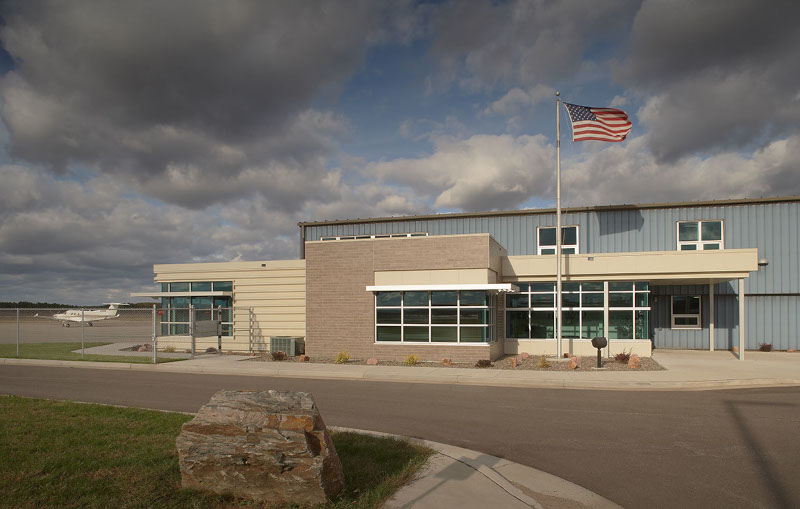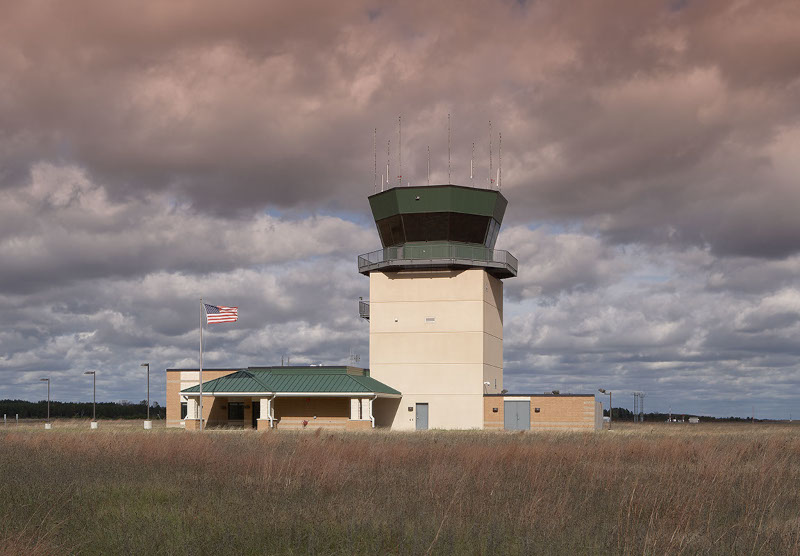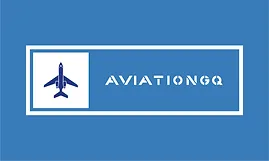Chippewa Valley Regional Airport
Elevating Horizons: The Progressive Journey of Chippewa Valley Regional Airport
Chippewa Valley Regional Airport, a hub of innovation and growth, is shaping the future of aviation in western Wisconsin
Nestled in Chippewa County, Wisconsin, the Chippewa Valley Regional Airport (EAU) is a vital gateway to the western Wisconsin region. Owned by Eau Claire County, it’s strategically located just 3.5 miles north of Eau Claire’s central business district. As the largest airport in a 20-county area, its reach has historically catered primarily to the Chippewa Valley region but has expanded recently with new airline service. The airport’s operations are governed by a budget approved by a seven member commission representing Chippewa and Eau Claire counties.
The airport remains a critical hub for not only general aviation, but for business aviation including Menards® an Eau Claire-based company, and Mayo Clinic Ambulance Service which bases its air ambulance helicopter at EAU. It also serves as an alternative landing site for flights heading to Minneapolis-Saint Paul International Airport (MSP). As of December 2022, Sun Country Airlines was the designated essential air service (EAS) provider offering weekly service to MSP as well as a seasonal rotation of destinations such as Las Vegas, Fort Myers, and Orlando. This unique EAS offering is the first in the country and has helped to expand the passenger reach of the airport.
The airport’s rich history dates back to 1923, when 80 acres of land in Putnam Heights were acquired to construct it. Officially opening in 1947 with the arrival of a Northwest Airlines DC-3, the airport has undergone various upgrades over the years, including terminal expansions, the addition of a new control tower in 2006, and various other facility improvements.
Now spanning over 1,100 acres at an elevation of 913 feet, the airport features two runways and accommodates various aircraft operations. Through November 2023, it reported 21,517 aircraft operations, predominantly in general aviation, air taxi, military, and a small fraction of scheduled commercial flights. The airport is also home to almost 100 based aircraft, including single-engine, multi-engine, jet, helicopter, and military aircraft.
The Federal Aviation Administration includes the Airport in its National Plan of Integrated Airport Systems for 2023–2027, categorizing it as a non-hub primary commercial service facility. It ranks as Wisconsin’s seventh busiest of eight commercial airports.
Enhanced Services at Chippewa Valley Regional Airport
In the ever-evolving aviation landscape, the Chippewa Valley Regional Airport distinguishes itself not only by its location and history but also by the breadth and quality of its services and relationships with its business partners. This becomes evident as Charity Zich, the Airport Director sheds light on the significant developments and operations at the airport.
Regarding the airport’s Fixed Base Operator (FBO), she highlights Hawthorne Aviation’s significant role. “Hawthorne Aviation, a growing aviation services company, provides FBO services in Eau Claire, and through its subsidiary, Heartland Aviation, also provides maintenance and charter services,” Zich explains. The collaboration between the airport and its FBO has recently culminated in the construction of a new hangar. “This 25,000 square foot hangar, a product of our partnership with Hawthorne, equips us to accommodate all large cabin business jet aircraft,” Zich notes, emphasizing the airport’s enhanced capacity for diverse needs.
Addressing the operational dynamics of the FBO, Zich clarifies, “We don’t have self-serve fuel; instead our FBO focuses on the customer experience by providing service to all fuel customers.” This service is part of the comprehensive support provided to pilots and aviation staff. As she specifies, the airport’s operational hours are tailored to meet varying demands. “While the airport is accessible around the clock, our staff and FBO target hours to meet peak demand from early morning to late evening. However, they are flexible and also available for after-hours services as needed,” she adds, underscoring both the airport and FBO’s commitment to accommodating varied schedules and requirements.
 The Backbone of Chippewa Valley Regional Airport
The Backbone of Chippewa Valley Regional Airport
Behind the seamless operation of Chippewa Valley Regional Airport lies a team of dedicated professionals, each playing a crucial role in maintaining the facility’s efficiency. This human element keeps the airport running smoothly, from daily operations to strategic planning.
Zich shares insights into the team dynamics at the airport. “We have a small, very dedicated team,” she says. This team comprises around five individuals who are regularly responsible for maintenance and operations across the airport’s facilities. She also mentions another crucial member who assists with the airport’s badging program and provides critical administrative support. This lean yet efficient team structure underscores the airport’s ability to manage its operations effectively while keeping an eye on maximizing efficiency.
Regarding her typical day and responsibilities, Zich paints a picture of a dynamic and varied role. “There is no typical day in the life of airport management,” she states. Her responsibilities range widely, from overseeing the entire operation and maintenance of the facility to setting its strategic direction. She actively engages with customers, generates new business opportunities, addresses air service inquiries, and spearheads marketing and public relations efforts. “It’s a fun job, offering the chance to do something different each day,” she adds, highlighting her role’s diverse and exciting nature.
Zich’s personal journey into the world of aviation is unconventional. Contrary to what one might expect, her path to this field was not through a family connection or military background. “I grew up near the University of North Dakota, known for its aviation curriculum,” she explains. Her initial plan was to pursue a general business degree, but a work-study program in the aviation department changed her trajectory. “Working with professors in aviation piqued my interest in airport management,” she recalls. This experience led her to pursue a degree in the field, a decision she cherishes. “It’s a wonderful career that allows me to ensure the safe and efficient operation of an air transportation facility, and make a significant impact on the community I live in,” she reflects.
Ongoing Developments and Safety Enhancements
At Chippewa Valley Regional Airport, a series of renovations and safety improvements underscore the commitment to modernization. Zich details the specifics of these developments, highlighting how the airport has continually evolved to meet the changing needs of aviation and maintain the highest safety and efficiency standards.
“Improvements at an airport are constant,” she notes. Among the recent significant upgrades is the reconstruction of the fire station. “Our new fire station is now a modern facility, incorporating advanced technology for better response coordination,” Zich explains. This upgrade is in anticipation of a new fire truck expected in the upcoming year.
The airport’s commitment to safety and wildlife management is evident in its perimeter fence replacement project. “We’re about halfway through a multiyear project to transition from a six-foot to a ten-foot fence,” Zich says. Project completion slated for fall 2024, will mark a significant step in enhancing airport security and wildlife management.
As outlined by Zich, these ongoing enhancements at Chippewa Valley Regional Airport reflect a proactive approach to upgrading facilities. Through strategic planning and effective use of resources, the airport continues to position itself as a safe, modern, and efficient hub for the region’s aviation-related activities.
Strategic Partnerships and Operational Structure
The Chippewa Valley Regional Airport’s success and ongoing development are a product of internal efforts and the result of robust external collaborations and a unique operational structure.
Zich elaborates on these vital relationships and the organizational framework that enables the airport to thrive and adapt to changing needs. She highlights the importance of local vendors and suppliers in airport operations. “Our collaborations vary depending on the project,” she says, “but our partnership with Mead and Hunt has been constant.”
This multifaceted aviation consulting firm provides engineering, architectural, and planning services, including the current master plan update. This long-standing relationship underlines the importance of consistent and expert guidance in the airport’s development.
Zich describes a distinctive operational structure by discussing the airport’s relationship with the city and county. “Eau Claire County owns the airport, but the airport operates under an agreement between both Eau Claire and Chippewa counties,” she explains. This arrangement led to the Chippewa Valley Regional Airport Commission, a seven-member board responsible for oversight and operation. “This structure has been pivotal in our growth, allowing us to swiftly respond to new business development opportunities and capitalize on funding for improvement projects,” Zich notes.
 Vision for the Future and Addressing Industry Challenges
Vision for the Future and Addressing Industry Challenges
The Chippewa Valley Regional Airport faces promising prospects and industry-wide challenges as it looks ahead. Zich offers insights into the airport’s plans, its approach to emerging issues, and the overarching goal of remaining a pivotal regional and national asset.
“Our hangars have been nearly full for several years, and aircraft operations have increased by about 15%,” she notes, indicating a robust demand. The airport is always seeking new opportunities to better serve stakeholders. “We’ve built new hangars and are constantly exploring opportunities to enhance our facilities,” she adds. This ongoing development aims to accommodate existing stakeholders and attract new business to the area.
According to Zich, one of the most pressing challenges for regional airports is the pilot and aviation worker shortage. Addressing this, she references initiatives by U.S. Senator Tammy Baldwin, including efforts to increase federal student loan limits for aspiring professional pilots and expand the GI Bill for flight training. “These are some immediate solutions we should be focusing on,” she suggests, highlighting the need for accessible pathways into aviation careers.
At the same time, Zich proudly points out the airport’s comprehensive capabilities. “We are the largest airport in western Wisconsin, capable of serving a wide range of aircraft,” she states. From small single-engine planes to Boeing 737 800s for scheduled services, the airport’s facilities for maintenance, storage, and business jet charters through Heartland Aviation demonstrate its full-service nature.
As a parting shot, Zich focuses on the airport’s commitment to improvement and service diversity. “We strive to be an all-weather facility, offering a wide range of services to our community and beyond,” she says. This focus on continual enhancement and regional significance underscores the airport’s role as a dynamic and essential component of local and broader aviation networks.
AT A GLANCE
Chippewa Valley Regional Airport (EAU)
What: A full-service airport facility catering to general, corporate, and commercial aviation
Where: Eau Claire, Wisconsin



